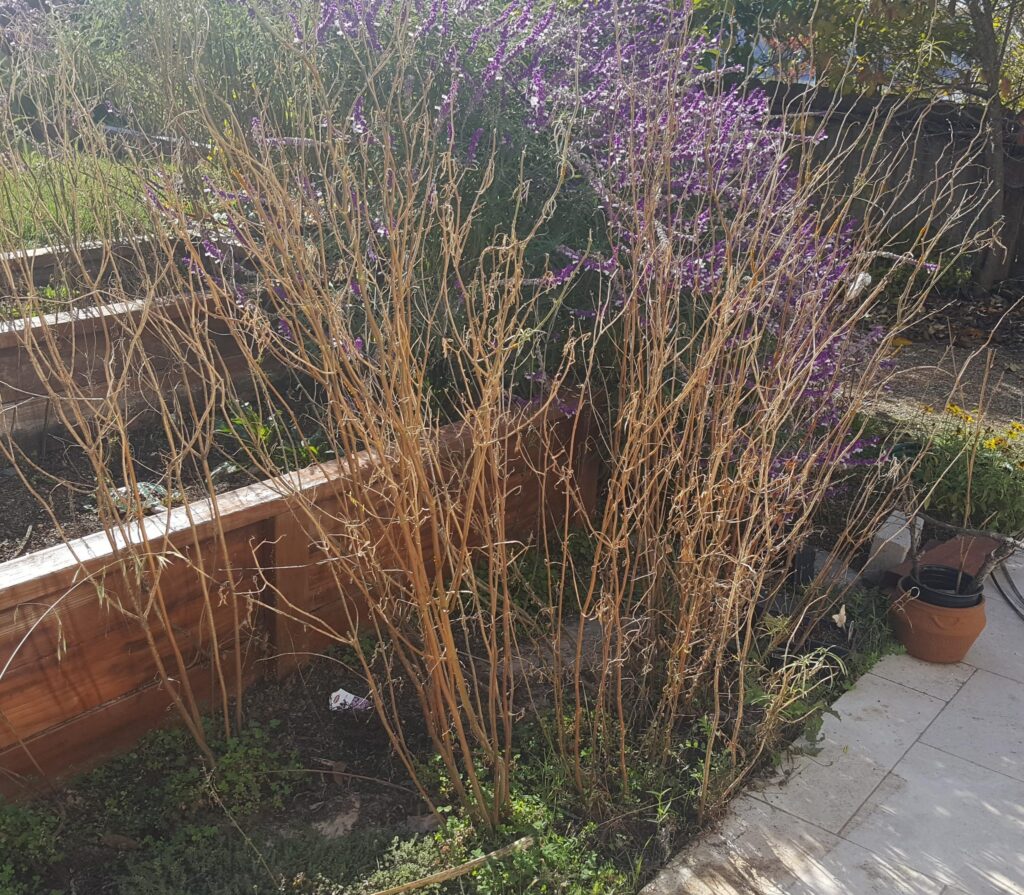It has been a very successful spring and summer here in Solano County, spreading the word about how to support the Monarch Butterfly population locally and spotting many of these iconic insects floating through our yards this year. Fall is the season to clean up the milkweed garden, as the last few caterpillars pupate and the final Monarch Butterflies take flight for their over-wintering sites. It is also the time to begin preparing the garden bed for next year!
With shorter days, and chillier nights, native milkweed begins naturally to yellow and collapse. The roots continue to store energy for next year, so keep them watered and your plants should come back bigger and stronger than ever in the spring.
However, if you have been growing tropical milkweed (asclepias curassavica), it is recommended that you remove it and replace it with other native milkweed now. At the very least, cut the plants back almost to the ground. This variety of milkweed remains evergreen and even may flower through the winter, which allows the protozoan parasite Ophryocystis Elektroscirrha (“OE”) to build up in the plant. This disease affects the Monarch Butterflies’ overall fitness, reduces their ability to reproduce successfully, and can interfere with their migration. Instead, look for seeds of native milkweed. In our local area, showy milkweed (asclepias speciosa) and narrowleaf milkweed (asclepias fascicularis) are the recommended varieties to grow, so collect seeds to sow now or in the early spring.
When planting milkweed, the seeds need “stratification,” which is the process of breaking down the seed coating with moisture and cold temperatures. If you plant seeds directly outdoors now, the rains and winter cold will stratify the seeds naturally, and they will develop strong root systems by spring.
A very good resource for fall planting instructions can be found on the Monarch Butterfly Garden website, at
https://monarchbutterflygarden.net/fall-planting-milkweed-10-steps/
Alternatively, you can store moistened seeds in the refrigerator for a few months throughout the winter (lay them out on moistened paper towels in layers in a large flat container), and then start them indoors in the spring in small pots or starter cells. Keep them warm and watered, and when they have 3-4 sets of leaves, plant them outdoors after the last frost has passed.
While you are planning your milkweed garden, do not forget about nectar plants to attract and nourish the butterflies. You can find a good list, tailored to California, by the Xerces Society at:
https://xerces.org/publications/plant-lists/monarch-nectar-plants-california
While you are looking ahead to next year, a fun and educational fall and winter activity is to visit a monarch overwintering site. The most well-known and largest are at Natural Bridges, Pacific Grove, and near Pismo Beach, but they also have been spotted nearby on Mare Island and at Point Pinole. Use the map from Western Monarch Count here to find a site:
https://www.westernmonarchcount.org/find-an-overwintering-site-near-you/
Finally, if you are interested in getting more involved, consider participating in the Thanksgiving Monarch Count, from November 13- December 5, 2021. You can find information here:
https://www.westernmonarchcount.org/western-monarch-thanksgiving-count-2021/
Thank you to everyone who has worked so hard in Benicia, Vallejo and all over Solano County to support the Monarch Butterfly. The overwintering population numbers are WAY up! A 3500% increase in Pismo Beach alone. 💕 https://www.sanluisobispo.com/news/local/environment/article255185907.html?fbclid=IwAR3JK4vxDp9NIjSmG64B-129wCDqhmy6FFWPOWGm6rN4P3tWz2XYyFvKxuI
As fall approaches and the Monarchs move to their over-wintering sites, we are hopeful for other increases in population as well. Keep up the good work raising Monarchs and if you haven’t already, please consider joining our Monarch Milkweed Project group on Nextdoor: https://nextdoor.com/g/our9txeuo/
-by Mary F.
